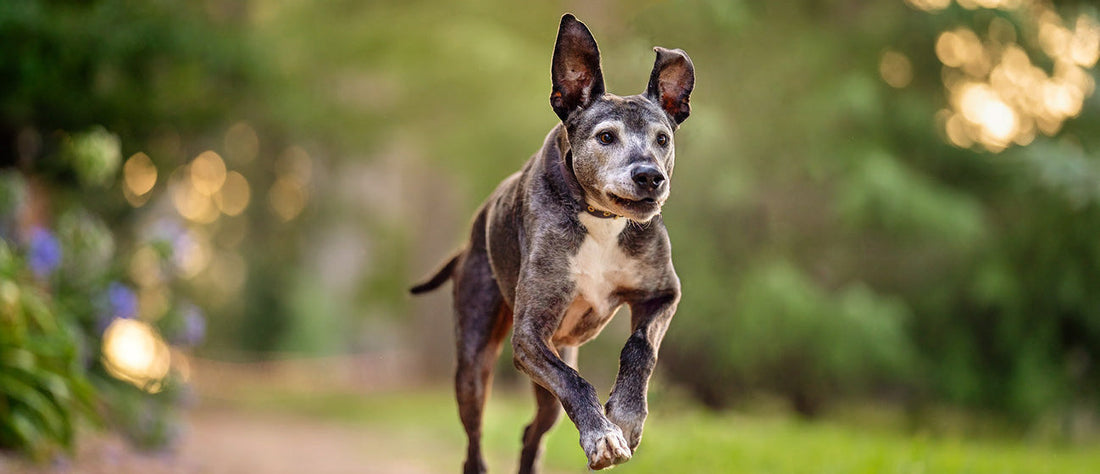
How Long to Wait to Feed a Dog After Exercise
Written by Darwin's
Your dog needs exercise to stay healthy and active, but you might be wondering how long to wait to feed them after exercise. The amount and type of food you feed your dog, along with a number of other variables, determine when to feed them after activity. It's crucial to realize that your dog needs optimal nutrition after exercise for their overall health and well-being, and waiting the appropriate amount of time can assist guarantee that they receive the nutrients they require.
The Impact of Exercise on Dog Nutrition
While exercise is crucial for a dog's overall health, it often impacts how well their food is digested. Dogs' digestive systems, for instance, are not able to handle dog food as rapidly as they normally can when they exercise too much. This means that food will probably take longer to digest, which can result in digestive upset and even bloat in some circumstances, both of which can be very detrimental to dogs. Moreover, too much exercise can dehydrate your dog, which can also cause digestive problems.
It's crucial to wait before feeding your dog after exercise to meet their nutritional needs. This gives their digestive system some breathing room and a chance to recover from the physical strain.
When deciding how long to wait before feeding your dog, it's also crucial to take into account the type of exercise they performed. Compared to a leisurely dog walk or playtime, hard pursuits like long-distance running call for more downtime. Therefore make sure to research the specifics of how much exercise a dog requires and how frequently you should take your dog for walks, as it differs between adult dogs, puppies and senior dogs.
As a dog owner, knowing how exercise affects your dog's digestive system will help you feed them properly after activity and maintain their general health and well-being. You can improve your dog's digestion and lower their risk of developing bloat or other digestive issues by allowing them enough time to recover from activity before feeding them.
How Long Does it Take for Dogs to Digest Food?
Dogs' digestion times vary depending on a number of factors, including breed, size, and level of exercise. The average time it takes a dog to digest meals is between four and eight hours. Larger dogs or those with higher activity levels may take a little longer to digest meals than smaller dogs with lower activity levels.
Because exercise intensity can influence how quickly a dog's body digests food, exercise, and canine nutrition are tightly associated. A dog's metabolism may increase after vigorous activity, causing them to digest food more quickly than usual. As a result, when choosing when to feed your pet, it's crucial to take their degree of exercise into account.
Feeding Schedule for Active Dogs: Tips and Guidelines
Almost as important as the exercise itself is the correct nourishment to consume after. After activity, properly fueling your dog helps them recover fast and maintain their energy levels while preventing health problems like dehydration or weariness. Here are some pointers and recommendations for setting up a feeding schedule for active dogs so that you may be sure your pup is getting the right nourishment.
Timing Is Key
It is preferable to wait at least 30 minutes before feeding someone after exercise. This gives your dog's digestive system time to adjust and avoids digestive problems. Then, give your dog smaller meals more frequently throughout the day so they have more chances to recharge and recuperate from their workout.
Portion Control
The nutrition you provide your dog should be based on their specific requirements and degree of exercise. Increase the amount of your dog's supper in accordance with how active they were that day by feeding them some delectable raw dog food or their preferred natural dog food, such as meals that include freeze-dried liver dog treats for added protein and nutrients.. On the other hand, cut back on the portion size of their meal if they've had a day with less vigorous exercise. To ensure the dogs are receiving the proper amount of nutrients, be sure to alter their portion sizes to match their unique activity levels and regularly check the dogs' weight. For guidance on appropriate portion sizes, see our how much to feed a dog chart, which takes into account different activity levels and sizes.
Best Foods to Feed Your Dog After Exercise
It's critical to select high-quality food sources that will provide your dog with the nutrition and energy they require to recuperate from an exercise session. Whole grains like brown rice and oats can aid in digestion and supply carbohydrates for energy. Lean proteins like chicken and fish are also wonderful sources of energy. Also, including foods like carrots, apples, and broccoli in your dog's diet can help them acquire the essential vitamins and minerals they need to stay strong and energized. To assist get natural foods into your dog's system, think about looking into raw dog food or search PetKeen to see what may be best for your pet.
Your dog may be the healthiest and happiest version of themselves with the proper dog diet following exercise. Lean proteins, complete grains, and a large selection of fruits and vegetables make for the ideal natural pet food to give your dog after exercise. To ensure the dogs are receiving the proper amount of nutrients, be sure to alter their portion sizes to match their unique activity levels and regularly check the dogs' weight.
Sources:
Why Exercise Before Or After A Meal Can Be Really Bad For Your Dog
https://www.thevet.co.uk/pet-advice/exercise-meal-can-really-bad-dog/
The best times of the day to feed and exercise dogs
Nutrition for Exercising Dogs: Timing of Meals
https://companion-animals.extension.org/nutrition-for-exercising-dogs-timing-of-meals/
Feeding Time: How Often and How Much?


